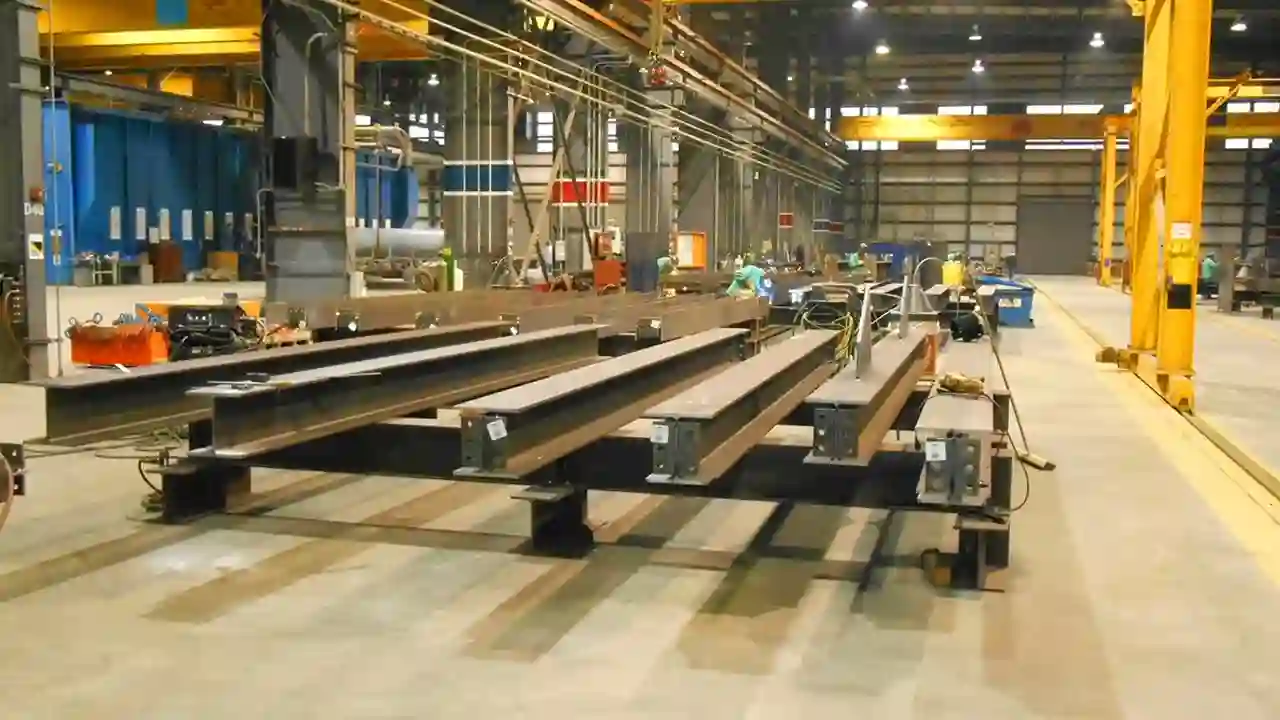30 May 2024

Steel, an alloy of iron and carbon, is a remarkable material that has become indispensable in our modern world. Its versatility and strength make it the backbone of various industries, from construction to manufacturing. By carefully combining elements and precise treatment processes, diverse steel grades are created, each tailored to specific requirements like corrosion resistance or exceptional durability. From towering skyscrapers to reliable appliances, steel's adaptability has enabled innovations across sectors, driving progress. Steel fabricators play a crucial role in shaping this versatile material through fabrication processes, transforming it into essential components for machinery, vehicles, and infrastructure. With its remarkable durability and strength, steel remains an important construction material, shaping the world we live in.
Want to know more about how precision plays an important role in steel fabrication check out our blog post "The Importance of Precision in Steel Fabrication."
A basic carbon steel with low carbon content (0.05-0.25%), making it relatively soft and ductile. It is inexpensive and widely used for construction, machinery, and various general-purpose applications where high strength is not required.
These steels contain small amounts of alloying elements like chromium, nickel, and molybdenum, which increase their strength and toughness. They are used in structures, vehicles, and machinery where a high strength-to-weight ratio is desired.
This is a type of low-alloy steel that forms a stable rust-like appearance when exposed to weather, eliminating the need for painting. It is often used in outdoor structures, bridges, and sculptures due to its natural protective layer.
It is a type of a corrosion-resistant steel containing chromium and nickel, which forms a passive oxide layer. Austenitic stainless steels are widely used in food processing, chemical industries, and household appliances due to their excellent corrosion resistance and formability. It is a type of a corrosion-resistant steel containing chromium and nickel, which forms a passive oxide layer.
Martensitic stainless steel is a highly hardened stainless steel with a martensitic microstructure, containing chromium, molybdenum, and other alloying elements is widely used by steel fabricators for cutting tools, bearings, and other applications requiring high strength and wear resistance.
It is a combination of austenitic and ferritic stainless steels, offering high strength, corrosion resistance, and good weldability. It is commonly used in chemical processing, oil and gas, and marine environments.
Tool steel belongs to a family of highly alloyed steels designed for manufacturing cutting tools, dies, and other wear-resistant components. They can be heat-treated to achieve high hardness and wear resistance.
It is a special low-alloy steels designed to withstand high temperatures and pressures in boilers, pressure vessels, and piping systems. They have good strength and resistance to creep and stress corrosion cracking. These specialized steels cater to the demands of the power generation and petrochemical industries.
Electrical steel is high-quality steel containing silicon, which enhances its magnetic properties. It is used in transformers, motors, and other electrical applications where low energy losses and high magnetic permeability are required.
From mild carbon steels for general construction to advanced alloyed grades engineered for extreme environments, the diversity of steel types highlights its incredible versatility as a material. Each variety is carefully designed to optimize properties like strength, corrosion resistance, formability and more for specialized applications across industries. As technologies continue advancing, innovations in steel production will likely unlock new high-performance grades tailored for emerging needs. Steel remains a ubiquitous and essential material shaping our modern world through its unparalleled combination of properties, cost-effectiveness and sustainability. Understanding these different grades empowers engineers, designers and consumers to leverage the full potential of this remarkable alloy.
If you're interested in the latest developments in steel fabrication, check out our blog post titled "Top Innovations in Steel Fabrication Technology."